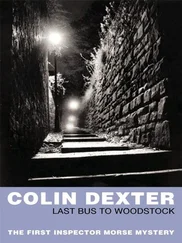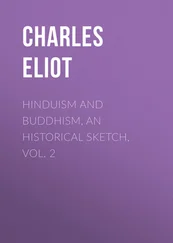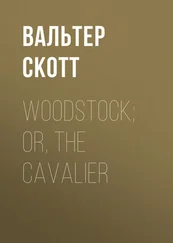Clarence Bowen - Woodstock - An historical sketch
Здесь есть возможность читать онлайн «Clarence Bowen - Woodstock - An historical sketch» — ознакомительный отрывок электронной книги совершенно бесплатно, а после прочтения отрывка купить полную версию. В некоторых случаях можно слушать аудио, скачать через торрент в формате fb2 и присутствует краткое содержание. Жанр: foreign_prose, foreign_antique, Историческая проза, foreign_language, на английском языке. Описание произведения, (предисловие) а так же отзывы посетителей доступны на портале библиотеки ЛибКат.
- Название:Woodstock: An historical sketch
- Автор:
- Жанр:
- Год:неизвестен
- ISBN:нет данных
- Рейтинг книги:3 / 5. Голосов: 1
-
Избранное:Добавить в избранное
- Отзывы:
-
Ваша оценка:
- 60
- 1
- 2
- 3
- 4
- 5
Woodstock: An historical sketch: краткое содержание, описание и аннотация
Предлагаем к чтению аннотацию, описание, краткое содержание или предисловие (зависит от того, что написал сам автор книги «Woodstock: An historical sketch»). Если вы не нашли необходимую информацию о книге — напишите в комментариях, мы постараемся отыскать её.
Woodstock: An historical sketch — читать онлайн ознакомительный отрывок
Ниже представлен текст книги, разбитый по страницам. Система сохранения места последней прочитанной страницы, позволяет с удобством читать онлайн бесплатно книгу «Woodstock: An historical sketch», без необходимости каждый раз заново искать на чём Вы остановились. Поставьте закладку, и сможете в любой момент перейти на страницу, на которой закончили чтение.
Интервал:
Закладка:
Clarence Winthrop Bowen
Woodstock: An historical sketch
As a full history of Woodstock has been in preparation for several years and will, it is hoped, be published in the course of another year, this brief sketch is issued as it was read at the Bi-Centennial Anniversary of the town.
I
The history of the town of Woodstock is associated with the beginnings of history in New England. The ideas of the first settlers of Woodstock were the ideas of the first settlers of the Colony of Plymouth and the Province of Massachusetts Bay. The planting of these colonies was one of the fruits of the Reformation. The antagonism between the Established Church of England and the Non-Conformists led to the settlement of New England. The Puritans of Massachusetts, at first Non-Conformists, became Separatists like the Pilgrims of Plymouth. Pilgrims and Puritans alike accepted persecution and surrendered the comforts of home to obtain religious liberty. They found it in New England; and here, more quickly than in the mother country, they developed also that civil liberty which is now the birthright of every Anglo-Saxon.
II
The settlement of Woodstock is intimately connected with the first organized settlement on Massachusetts Bay; and how our mother town of Roxbury was first established is best told in the words of Thomas Dudley in his letter to the Countess of Lincoln under date of Boston, March 12, 1630-1:
“About the year 1627 some friends, being together in Lincolnshire, fell into discourse about New England and the planting of the gospel there. In 1628 we procured a patent from his Majesty for our planting between the Massachusetts Bay and Charles River on the South and the River of Merrimack on the North and three miles on either side of those rivers and bay … and the same year we sent Mr. John Endicott and some with him to begin a plantation. In 1629 we sent divers ships over with about three hundred people. Mr. Winthrop, of Suffolk (who was well known in his own country and well approved here for his piety, liberality, wisdom, and gravity), coming in to us we came to such resolution that in April, 1630, we set sail from Old England… We were forced to change counsel, and, for our present shelter, to plant dispersedly.”
Settlements were accordingly made at Salem, Charlestown, Boston, Medford, Watertown, and in several other localities. The sixth settlement was made, to quote further from the same letter to the Countess of Lincoln, by “others of us two miles from Boston, in a place we named Rocksbury.” 1 1 Also spelt Roxberry, Roxborough, Rocksborough.
The date of settlement was September 28, 1630, and just three weeks later the first General Court that ever sat in America was held in Boston. The same year the first church in Boston was organized. 2 2 July 30, 1630.
Roxbury, like the other settlements of Massachusetts Bay, was a little republic in itself. The people chose the selectmen and governed themselves; and as early as 1634, like the seven other organized towns, they sent three deputies to Boston to attend the first representative Assembly at which important business was transacted. The government of Roxbury, like the other plantations, was founded on a theocratic basis. Church and state were inseparable. No one could be admitted as a citizen unless he was a member of the church. Many of the first settlers came from Nazing, a small village in England, about twenty miles from London, on the river Lee. Morris, Ruggles, Payson, and Peacock, names read in the earliest records of Woodstock, were old family names in Nazing. Other first inhabitants of Roxbury came from Wales and the west of England, or London and its vicinity. Among the founders were John Johnson, Richard Bugbee, and John Leavens, whose family names are well known as among the first settlers of Woodstock. All were men of property 3 3 Young’s “Chronicles of Massachusetts,” p. 396.
; none were “of the poorer sort.” In 1631 the Rev. John Eliot, a native of the village of Nazing, arrived with a company of Nazing pilgrims. Eliot, though earnestly solicited to become pastor of the church in Boston, 4 4 Winthrop’s “Journal,” by Savage, vol. i., p. 111.
accepted the charge of the church in Roxbury, which was organized in 1632, 5 5 “Ordained over the First Church, Nov. 5, 1632.” – Eliot’s tomb in Roxbury.
and was the sixth church, in order of time, established in New England. Another name equally prominent in the earliest years of the history of Roxbury was that of William Pynchon, afterwards known as the founder of Springfield in Massachusetts. Only Boston excels Roxbury in the number of its citizens who have made illustrious the early history of the Massachusetts colony. 6 6 “Memorial History of Boston,” vol. i., p. 403.
Among the early settlers of Roxbury who themselves became, or whose descendants became, the early settlers of Woodstock, were the Bartholomews, Bowens, Bugbees, Chandlers, Childs, Corbins, Crafts, Griggses, Gareys, Holmeses, Johnsons, Lyons, Levinses, Mays, Morrises, Paysons, Peacocks, Peakes, Perrins, Scarboroughs, and Williamses. 7 7 Though the Williamses did not settle permanently in Woodstock till some years after the first settlement, the family was most prominent in Roxbury, and one of its representatives visited the grant officially in 1686.
In 1643 the towns within the jurisdiction of Massachusetts had grown to thirty, and Roxbury did more than her share towards the organization of the new towns. In fact, Roxbury has been called the mother of towns, no less than fifteen communities having been founded by her citizens. 8 8 Drake’s “Town of Roxbury” and “Memorial History of Boston,” vol. i., pp. 401-422.
Among the most important of these settlements was the town of Woodstock, whose Bicentennial we this day celebrate.
III
A glance at the country about us previous to the settlement of the town, in 1686, shows us a land sparsely inhabited by small bands of peaceful Indians, without an independent chief of their own, but who paid tribute to the Sachem of the Mohegans, the warriors who had revolted from the Pequots. Woodstock was a portion of the Nipmuck 9 9 De Forest’s “Indians of Connecticut,” and Palfrey’s “History of New England,” and Miss Ellen D. Larned’s “History of Windham County.”
country, so-called because it contained fresh ponds or lakes in contrast to other sections that bordered upon the sea or along running rivers. Wabbaquasset, or the mat-producing place, was the name of the principal Indian village, and that name still exists in the corrupted form of Quasset to designate a section of the town. Indians from the Nipmuck 10 10 Also “called the Wabbaquassett and Whetstone country; and sometimes the Mohegan conquered country, as Uncas had conquered and added it to his sachemdom.” Trumbull’s “History of Connecticut,” vol. i., 31.
country took corn to Boston in 1630, soon after the arrival of the “Bay Colony”; and in 1633 11 11 September.
John Oldman and his three Dorchester companions passed through this same section on their way to learn something of the Connecticut River country; and they
may have rested on yonder “Plaine Hill,” for history states that they “lodged at Indians towns all the way.” 12 12 Winthrop’s “Journal,” by Savage, vol. i, 132. Palfrey’s “Hist. of New England,” vol. i., 369. The same year (Nov. 1633), “Samuel Hall and two other persons travelled westward into the country as far as this [Connecticut] river.” Holmes’ “Annals,” vol. i., 220.
Интервал:
Закладка:
Похожие книги на «Woodstock: An historical sketch»
Представляем Вашему вниманию похожие книги на «Woodstock: An historical sketch» списком для выбора. Мы отобрали схожую по названию и смыслу литературу в надежде предоставить читателям больше вариантов отыскать новые, интересные, ещё непрочитанные произведения.
Обсуждение, отзывы о книге «Woodstock: An historical sketch» и просто собственные мнения читателей. Оставьте ваши комментарии, напишите, что Вы думаете о произведении, его смысле или главных героях. Укажите что конкретно понравилось, а что нет, и почему Вы так считаете.












